Quest for the Sage Grouse
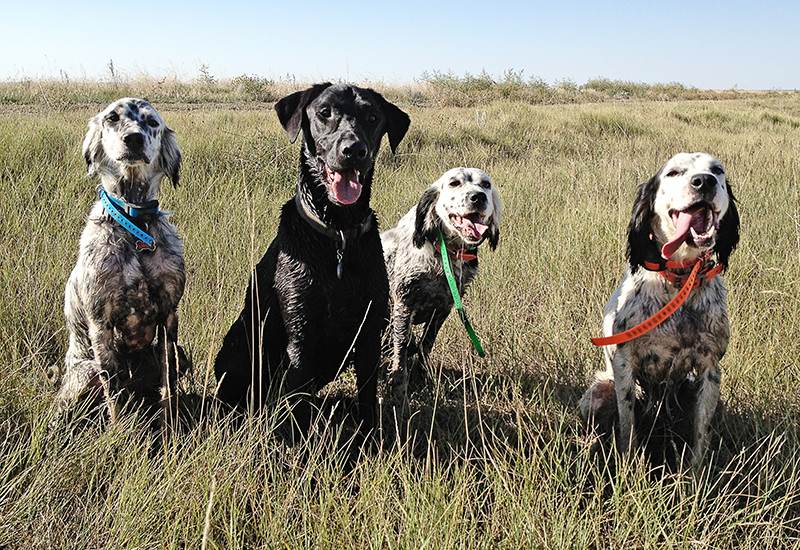
Three Llewellin setters hunting together for the first time are on point. It’s taken 9.5 miles of walking across rolling Montana sage to get this dog circus to this grand finale. Yet somehow my new hunting buddy Jory and I walk past without even noticing. I suspect his male setter Ridge has lead the discovery because he seems to be the only one with any energy left. But the ladies Sage and my Rio have crept in to back, all three dogs in a 10 yard circle confirming the inevitable.
Blame the unseasonable heat and resulting dehydration. Blame the welcome distraction of trucks now coming into view or the aching feet. Jory and I are lost in the story swap of other days afield. Something has made these pointing dogs invisible to us. Until the Sage Grouse, now sufficiently nervous from our ignorant behavior, begin vaulting to wing and Wyatt the black lab who has been heeling us out of exhaustion sees birds, taps one last energy reserve and closes to flush whatever lies in his path.
Long shots. It’s just too early in the season to be making them. But I fire two wayward shells at the nearest and biggest grouse I can pick out. Not a single feather is cut as it puts full girth behind wing beats, comes to full speed and disappears with its friends over the horizon.
With Wyatt nipping at the tail feathers of a bird late to the flight plan, Jory draws the same result with his salvo.
And the silence that sets in after shells are spent comes from the realization that my quest that started three years ago has come to this. A blown opportunity on a bird that may have very few left. A decision by the US Fish and Wildlife Service (FWS) is looming. The Sage Grouse could become the next recipient of the Endangered Species Act (ESA) label, joining a list that seems to never relinquish members.
The largest grouse species in the country has tormented me over hundreds of walking miles. Many Sharptail and other winged relatives have fallen along the journey, but the Sage Grouse has eluded all efforts.
Now to come this close, just outside good gunning distance. My shotgun feels heavy from the mixture of adrenaline and disappointment coursing through weary arms. I need to bring one of these birds to hand. I believe holding one will somehow make me understand whats happening with this species, will put it in the language of upland hunting which I understand best. I need to be a part of the history of this great bird before all that is left is history.
Luckily there are people like Tim Griffiths from Natural Resources Conservations Service and Sage Grouse Initiative Coordinator who can help frame the Sage Grouse into a broader perspective. The population has plummeted from millions to about 200,000 from the loss of intact sagebrush grasslands in 11 western states and Canada where its range has been reduced by half. Contributing factors and proposed solutions can be a gauntlet that gets complicated. There are no easy answers to put this bird back on the climb. And this is the West where ranchers and oil men carve a living from hard work; easy answers are frowned upon and rarely net real results.
There are only a handful of states where Sage Grouse can still be hunted. Most have very brief seasons, permit drawings and extremely conservative bag limits. Montana is one state with a significant population of birds that doesn’t seem to be under the same pressures, and allows hunting during the months of September and October.
But the truth is very few people actually pursue the Sage Grouse. Most hunters cite the flavor of the meat as the prime reason they won’t target them. Hunting has never been considered a factor in the population decline. From discussions with Tim I learn that habitat fragmentation is the largest enemy of Sage Grouse. A number of studies have shown that Sage Grouse are a migratory species with journeys ranging from 10 to 250 miles. Put a few dozen oil wells or a subdivision in the midst of one of these migration corridors and the grouse will abandon the area.
Most folks who live outside of the traditional range of the Sage Grouse are unaware of the debate currently brewing out West. Much of this part of the country is basking in the red hot economy created by the oil and gas boom. And even more of it is part of a tradition of ranching and grazing on massive tracts of private property and millions of acres of federal lands. The Sage Grouse Initiative (SGI) has identified 186 million acres as traditional habitat — 60% of this residing on federal land, 40% private. That’s nearly a third of the contiguous US land mass. If this amount of natural resource falls into restriction and regulation brought on by a ESA listing, you can be certain the rest of the country will feel the impact acutely.
But outside of all the gloom and doom, let’s look at the some of the things that SGI has accomplished since inception in 2010. What attracted my attention most and brought me to contact Griffiths is I recognized a new vibe in their conservation efforts. SGI is a highly targeted and science-based landscape approach to proactively conserve Sage Grouse and sustain the working rangelands that support western ranching economies. Conservation practices are designed to be win-win solutions addressing threats facing both Sage Grouse and rangelands.
Griffiths explained in detail how a custom grazing system can be implemented to the mutual benefit of rancher and wildlife alike. I’m no wildlife biologist, but I found it mind bending and contrary to so many of my preconceived notions of livestock. I have hopes that similar grazing practices will find their way into other public lands. Some other things that SGI has accomplished:
- Conservation easements were secured on 242,000 acres to maintain large and intact working ranches in some of the highest Sage Grouse abundant core areas. These actions anticipate a 2/3 reduction in bird loss as a result.
- Additional hiding cover increases Sage Grouse nest success by 10% within 2.1 million acres of grazing systems implemented.
- Tripled the chance of maintaining populations by removing 200,000 acres of invasive conifer in core habitats and prevented a loss of 60% of the available forage.
- SGI prevented 2,600 fence collisions by marking or moving 500 miles of ‘high-risk’ fence that reduced bird strikes by 83%.
No one who understands the facts and potential impacts wants to see an Endangered Species listing, all for selfish reasons of course. But in this case the selfish motives may actually work in favor of the birds. That’s why I have hope. SGI is working with all the major concerns — ranchers, oil and gas, hunters, conservation groups and states — to find common solutions which will benefit them and wildlife. Instead of preaching from an ivory tower or regulating economic and private interests into oblivion, they are working with biologists, scientists and landowners to find real solutions with measured results. It is refreshing and a model for future conservation efforts.
There’s no doubt that the birds that just escaped Jory and I have benefited from work that SGI has headed up.
As the pack of Llewellin circle long from winged excitement, I call Wyatt back to the original location of the flush. My gun has been reloaded without thought, just muscle memory from so many days afield. I’ve learned over years of pursuit of prairie species that often a bird from a covey believes they can outsmart predators without expending the energy of flight. Just hold tight, let the melee of a dozen birds taking wing distract and divert the pursuer then let ’em pass right by.
These are the times it pays off to have a hard-headed lab that reads body language and knows your thoughts before you do. As if on cue Wyatt runs his nose into the one hold out bird. I’ve closed the distance and wait just long enough for the bird to clear his darkness before snapping the trigger. The grouse folds and Wyatt is upon it. I drop to both knees. The end of this journey is overwhelming and it takes my breath away. Jory is there with congratulations and a high five that returns me to my feet.
I call for Wyatt to bring up the bird, exhaustion has him taking his sweet time. I let him savor the moment too.
Jory and I hunt together multiple times on this trip to Montana and our crew of dogs eventually settle into a rhythm. Though unseasonably warm the Sharptail cannot avoid the dognado and many come to hand. But the highlight of the trip is the Sage Grouse now tucked into the corner of my cooler, quite possibly the only one I will ever shoot. Respect for the bird, respect for conservation efforts makes me question whether I will ever pull the trigger again. But the heft of the largest grouse in the country is something I hope others will get to experience in the future.
And now I owe Jory an assist on an elk pack-out because he led me to this bird. Why he still hunts 4-legged beasts when he lives in the heart of bird country with two setters is something I will never understand.
——————————-
Visit the SGI website to see some great photos and videos of Sage Grouse. And be sure to like them on Facebook to stay up to date on their efforts.







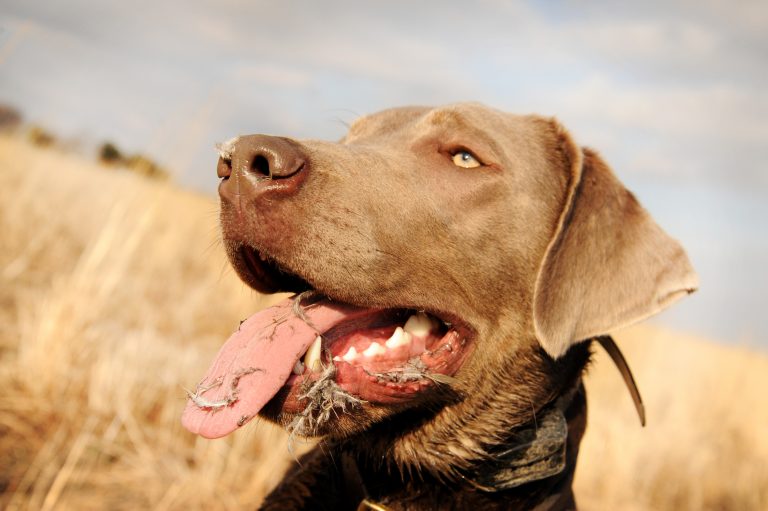
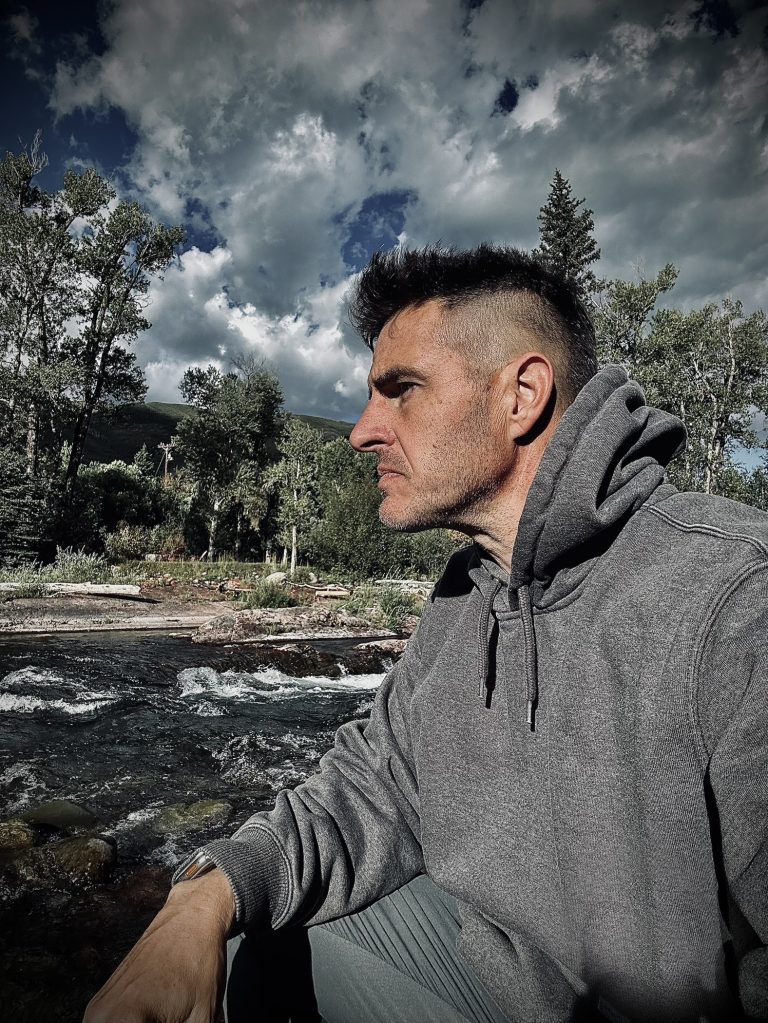
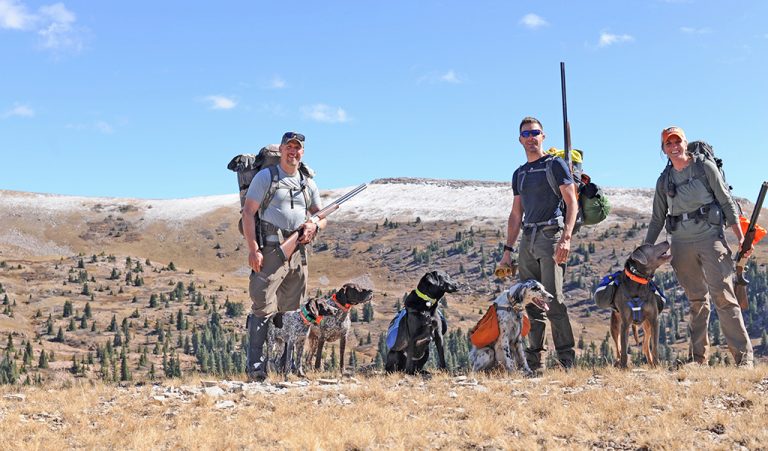
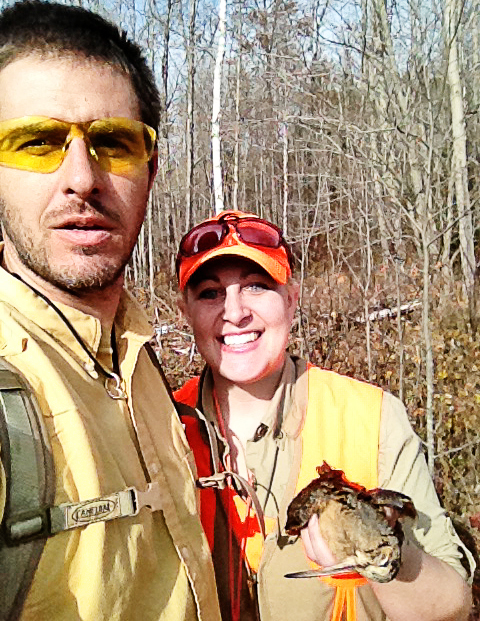
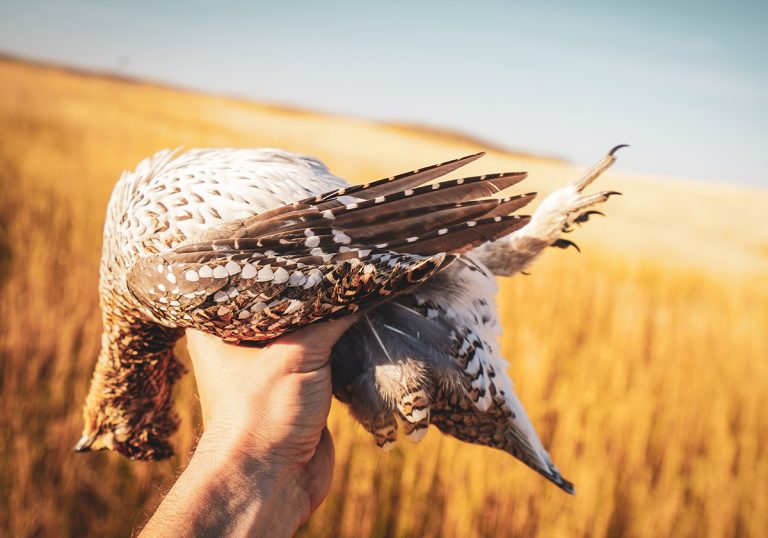
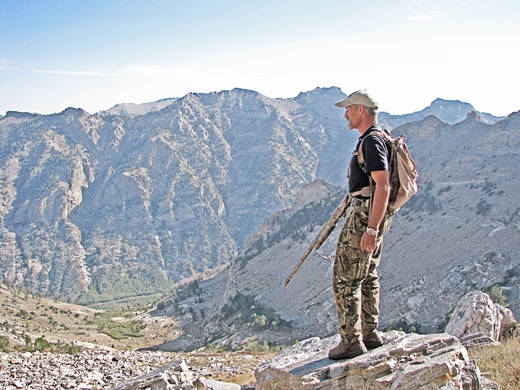
Great adventure—excellent article!!!
Great write up and congrats on your journey. You got to love it when it all comes together with a trophy like that.
Ben
Excellent article and pictures.
How do you feel about hunting sage-grouse in areas where so few birds are left? For example in Montana’s Shields Valley near Bozeman there are less than 50 males counted every year on leks where there used to be hundreds. But Montana Fish Wildlife and Parks continues the same bag limit and season for sage-grouse there as across the rest of the state (the most liberal in the nation).
Ben, I talked to a number of biologists from both federal and state agencies in Montana. I’m familiar with the Shields Valley. I would suspect that hunting is not the culprit for decline in the area, but more likely development and farming practices that are further fragmenting habitat. I hunted the Shields Valley two years ago and remember being struck by how BLM and State Trust Lands were easily identified at a distance by their grazed appearance.
That said, I believe the grazing systems that SGI are developing for Private Landowners are a huge leap forward in resource management. I would like to see the BLM and NFS begin to adopt SGI’s forward-thinking grazing practices across all federal lands instead of simple AUM calculations.
I believe all states’ fish and wildlife departments with Sage Grouse habitat should be working directly with the Sage Grouse Initiative in order to identify ways to prevent further decline. They are the experts who likely know exactly why the Shields Valley population is being pressured.
Certainly a more comprehensive look at how many birds are actually being taken by hunters and whether a state’s season, bag limits and regs should be amended are things to look at. But just because hunting is reduced or eliminated from an area does not mean the population will no longer decline.
I would also like to see a Federal Upland Bird Stamp Program initiated that would be similar to the Federal Duck Stamp Program which has been so successful in helping waterfowl recovery. I believe funds generated from such a program could be used to help Sage Grouse, Prairie Chicken and Bobwhite Quail habitats — and I’d put Tim Griffiths in charge of such a program right away.
An admirable, but somewhat convoluted and unsatisfactory justification as to why sage-grouse populations that are in decline should continue to be shot….
When Bighorn sheep die of pneumonia, FWP eliminates ram and ewe tags. When whitetails die of blue tongue, FWP eliminates doe tags (and even mule deer B tags because of hunting effort which shifts to these).
But when sage-grouse are in decline due to habitat damage, FWP won’t reduce harvest because harvest isn’t the principle cause of the decline? And the “hunter conservationist” agrees or at least parrots the agency line? These seems like a gross inconsistency. Put on your thinking cap!
Ben, you are attempting to compare apples to airplanes.
Disease in a species as you state above is an entirely different issue to deal with.
Sage Grouse will not return to habitat that is fragmented and destroyed. Populations will not stabilize or grow unless you address the problem. Hunting isn’t the problem.
This may be unsatisfactory to you, but it is simply fact to us.
I’m all for better reporting of annual harvests — Sage Grouse as well as all other species.
But hunter harvest not only isn’t the principle cause of decline, it isn’t in the top 10 causes of decline.
If you have better answers to solve the Sage Grouse decline, then by all means present them. It appears your only answer is “stop all hunting”. And I assure you that will do nothing to stabilize populations.
Our thinking caps are firmly in place, and there is nothing inconsistent about a conservationist hunter.
Thanks for posting our article. It’s great to be alongside articles detailing the great work being done for Sage Grouse.